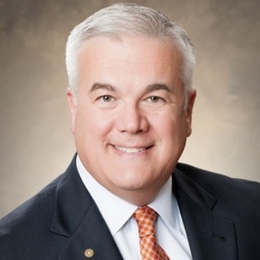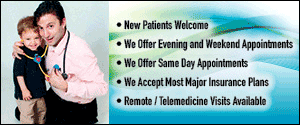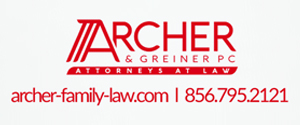
As a young dental professional, Dr. Gail Childers sought mentorship of one particular orthodontist and the guidance that he received would go on to help shape the rest of his career. Dr. Paul Batastini Sr. took Childers under his wing and explained to him how a referral practice was built on two sets of clients, first the patient and secondly the referral—whether it was a fellow colleague or a satisfied patient.
Utilizing that approach, Childers developed a passion for individualized patient-focused care and through the years he has built a sterling reputation for providing excellent customer service and exceeding expectations.
“My general philosophy is to treat every patient how you would wanted to be treated,” Childers says. “We customize and outline personal therapy for each patient and do not take a one-size-fits-all approach. … I can attest, that if you treat patients kindly and consistently in a positive and gentle way, your practice will develop and so will your team, and your reputation will grow as well as your practice.”
This was rung true as since Childers began utilizing laser therapy in his practice over 10 years ago. In particular the use of LANAP laser treatment, which targets the source of inflammation without hurting or removing healthy gum tissue, has gained notoriety after being extensively researched and obtaining FDA clearance for growing new alveolar bone, new periodontal ligament and new cementum. The effective treatment can stop periodontal attachment loss and decrease the pockets formed by gum disease without using a scalpel or sutures, thus eliminating the pain typically associated with periodontal surgery.
After Childers underwent training as part of Millennium Dental Technologies’ Laser Boot Camp (as well as taking part in several follow-up programs), he noticed an immediate interest in the procedure with his patients.
“The results are fantastic.” Childers says. “The patient feels little to no pain during the procedure.”
This is a better way to treat a very common disease that an estimated 50% of the population has, often unknowingly due to the lack of pain felt. Also, Childers is noticing “a better result with using LAPIP protocol for treatment of peri-implantitis, better than the conventional method of surgically opening the area up detoxifying the implant and grafting it with bone.”
“This allows us to provide a better service to the patient, causing less pain and producing better results and a positive caring experience,” he notes.
It is estimated that there are over 100,000 dental implants lost per year. In the early ’90s, dental implant manufacturers changed dental implant surfaces in an effort to allow for faster healing by making them more porous, not knowing that once these surfaces become exposed that bone loss can occur very rapidly. Thus clinicians need to make sure that an abundant amount of bone and gum tissue is present upon the insertion of the dental implant.
According to the International Team of Implantology (ITI), of which Dr Childers is fellow and is the director of the Southern New Jersey US ITI study club, a dental implant risk assessment needs to be performed on a patient-by-patient basis. It must be explained to the patient, a maintenance protocol must be developed and agreed upon prior to therapy being rendered. These risks include: smoking, general health, bone quality, and quantity and quality of gum tissue, depth probing around the dental implant, history of previous periodontal disease, cleansibility of the restoration, and fit of the restoration. Thereafter, an implant maintenance interval needs to be established every three-to-four months.
Compliance needs to be strict by both the clinician and the patient. Often bone loss occurs over the first two years and can develop with three threads or more. When this happens, a LAPIP procedure needs to be performed with the PerioLaseMVP-7 (Millennium) to help decrease the pocketing. In 90% of the cases, this results in true regeneration of the bone, and attaining a more stable and healthy environment. This less-invasive treatment enables faster tissue recovery and less discomfort for the patient.
Laser-Assisted Periodontal Regeneration (LAR) has been proven both clinically and histologically. Periodontal ligament, cementum and bone were proven to regenerate utilizing the Perio-Lase MVP-7 and is the only proven claim of modality allowing clearance by the FDA. Not all lasers operate on the same wave length and target the same tissues. This minimally-invasive surgical approach may offer advantages in regeneration of defects in the esthetic zone in which minimal soft tissues change is required.
With regard to other devices, one cannot extrapolate regenerative findings to other laser devices or treatment that have no defined protocols, operating parameters or treatment algorithms, and have no documentation of healing events from human histological studies. Thus, treating the disease is less invasive, does not involve cutting and suturing the tissue, and causes less pain for the patient and achieving a better clinical outcome.
Why would you prefer traditional or older therapy? The protocols of LANAP/LAPIP and LAR are proven to be effective and approved by the FDA. It is your choice. How do you wish to be treated?
Periodontal Health Professionals - Dr. Gail Childers
Marlton | (856) 983-5593
Turnersville | (856) 228-4141
DrGailChilders.com
Click here to subscribe to the free digital editions of South Jersey Magazine
To read the digital edition of South Jersey Magazine, click here.
Published and copyrighted in South Jersey Magazine, Volume 20, Issue 8 (November 2023)
For more info on South Jersey Magazine, click here.
To subscribe to South Jersey Magazine, click here.
To advertise in South Jersey Magazine, click here.











